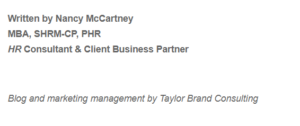
Today’s difficult question… How to address performance concerns when teleworking is not working? While some businesses had telecommuters in place prior to COVID, others did their best to quickly comply, sending employees home with a laptop while the rest of the essential workers remained on-site. Quick changes turned many workplace environments upside down overnight with an immediate need for management to grow trust with a remote team.
Remember, for many, telework is new. New to management and new to the employee… often creating unique challenges that require a manager to regularly revisit how ‘performance’ expectations are being communicated. Individualization is key as a one-size-fits-all doesn’t always fit.
Let’s begin with a few basics that positively impact managing a telework team…
- First, understand the changed work environment. Managers need to know the home setup of the teleworker (each one will be different) plus potential distractions, availability for ‘quiet’ time for calls or webinars and what work schedule is best. Individualize to the person to get the best performance. Being intentional when coaching a teleworker is key!
- Then, redefine objectives with work schedules. It’s no longer observing how the worker performs during regular business hours or what gets done at the end of the business day but did the teleworker meet objectives and deadlines. If not, time to revisit the setup and understand if anything changed. Collaborate and agree upon the objectives as not all responsibilities may be accomplished with telework.
- Set up intentional communication. Coaching performance to meet the ‘new’ normal expectations of telework requires frequent conversations and your staff needs to hear from you. Explore a variety of digital options for what works best with you and your team (whether team-oriented and when one-on-one time is needed). Calendar the weekly check-in so your team has the time set aside with no or minimal distractions and they’re prepared.
Now that businesses are a few weeks into the largest work-from-home movement, situations still arise that require managers to address and correct performance. Going back to basics and applying the simple format of interacting with the teleworker includes:
- First, identify the problem. Was a deadline missed, did the customer complain, did the teleworker miss a call or not respond to an email timely? Did objectives and work not meet standards as communicated and expected in the new telework environment?
- Remember, you must be able to document how performance has falling below expectations, including specific example(s) before you call the teleworker.
- Next, in today’s telework environment, was the expectation clearly communicated? If not, this may be an opportunity to redefine agreed-upon expectations clearly stating them in a follow-up email after the conversation.
- If expectations were clearly communicated, you must still engage in the interactive process by talking with your teleworker to understand if anything changed to make sure the teleworker may or may not be eligible for some type of leave protection, accommodation or other applicable law (or new Act or Order) that protects employment.
So, it is a performance problem! Based on the severity, is it a time to coach and redirect focus or time to document performance concerns and steps necessary to improve?
- Time to coach. Let’s go back to the basics by applying the following four (4) simple steps:
- Step 1 – Explain what needs to change and why. When you share the ‘why’, you give meaning to the expectation.
- Step 2 – Ask your employee to confirm they understand (often by repeating what needs to change).
- Step 3 – Involve your employee in the discussion. There may be other possible solutions and having the employee contribute creates a sense of commitment.
- Step 4 – Appreciate positive movement by recognizing achievements, even the small ones. Demonstrate your appreciation for who they are along with what they are doing.
- Time to document. Always prepare for the conversation, even when doing it by phone.
- Depending on the severity or if there have been issues in the past, the four most common types of discipline (and not necessarily a ‘step’ process) are verbal warning, written warning, performance improvement plan (at times suspension may be warranted) or termination.
- It is always okay, and suggested, to have a conversation before documenting to ensure you give your employee a chance to respond to performance concerns. At times this helps with hearing their viewpoint and if there was a misunderstanding, distraction, an event that occurred, etc. Then you prepare the document!
It is very important to keep in mind there may be other considerations, especially in today’s work environment, that must be reviewed prior to taking action. Balancing operational needs, employee’s teleworking and compliance is key!
We’re open and here to help with our complimentary assessment and consultation during this crisis!
HR Bridging, a division of McCartney Resources, is an established Human Resources firm with experienced, certified professionals ready to assist. Our team of HR experts have extensive experience in human resources, solid business acumen and a strong understanding of operations and objectives – spanning a wide variety of industries. Call today (866) 477-8728 or email us at info@HRBridging.com.


